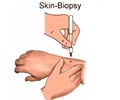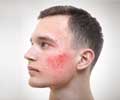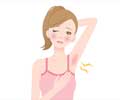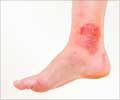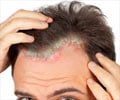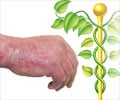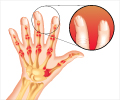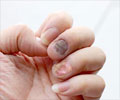About
Psoriasis is a recurrent and complex inflammatory skin disorder that can have tremendous physical and psychological impact on the sufferer.
Psoriasis is a complex, inflammatory disease which mostly affects the skin and joints. It is however not a contagious disease.
The disease affects both males and females of all age group. Nevertheless it mostly makes its mark for the first time in young individuals between the age of 15-20 years. It is quite unusual for the disease to manifest before the age of 5 years.
The incidence of psoriasis in the western populance is between 2-3% . There are more than 5 million Americans who have psoriasis, and it is estimated that the burden of the disease costs $1.6 to $3.2. billion each year (National Psoriasis Foundation).
Every year 150,000 and 260,000 new cases are diagnosed and this includes 20,000 in children who are younger than 10 years.
"This disease is common, chronic, and costly, both in monetary terms and in quality of life," says Jonathan Wilkin, M.D., Director of the FDA’s Division of Dermatologic and Dental Drug Products. The incidence of the disease is quite low in some populations,like the Japanese.
According to a study in India, 60% of the patients had the disease onset before the age of 30 years, with a positive family history in almost 14% of the cases. Skin and scalp were the most commonly affected site.
The inheritance of psoriasis does not fit into the Mendelian pattern. When one parent has the disease the chances of the child to develop the disease is 15-20%; if both parents have the disease, the chances of the child getting the disease is 50 percent.
One of the longest known illness, psoriasis is also one of the most misunderstood, as it was often confused with leprosy.
In 1841 a Viennese dermatologist Ferdinand Von Hebra assigned the word ‘Psoriasis’ to this disease. The word was coined from the Greek word ‘psora’-meaning ‘to itch’.
Plaque psoariasis or psoriasis vulgaris is the most common form of the disease. There are typically, red scaly patches - called psoriatic plaques that appear on the skin of affected persons. These plaques are inflammatory sites where the skin rapidly accumulates, thereby, taking on a silvery white appearance. When the scales are removed, the skin underneath is tender and tends to bleed and results in the inflamed patches.
In the case of a normal skin, the production and proliferation of the epidermal layer of the skin takes about 28 days to complete, while in the case of psoriasis, it is restricted to just 4 days. This results in the pile up of immature skin cells - a special feature characteristic to psoriatic lesion .
The severity with which psoriasis occur varies. The plaques may occur as local patches or they may be distributed all over the body. They frequently affect the skin covering the elbows and knees but may also occur on the scalp, finger or toe nails or on the genital area. In some cases, it may cause psoriatic arthritis or inflammation of the joints. This condition is observed in 10-15% of psoriasis patients.
The pathogenesis of psoriasis is yet unknown but it is believed to be immune-mediated. Genes may play a role in its development.
The psychological impact of the disease is inevitable because of the unattractive skin manifestations. Most often the patients are depressed and suffer from very low self-esteem. As such, their lifestyle becomes compromised.
Psoriasis treatment continues to be a challenge due to the recurrent nature of the disease. There is no cure for the disease.
Disease management will be dependant on its severity, its impact on the patient and also on the patient’s lifestyle. Those involved in the care of psoriatic patients must be skilled in the art of disease management and must also be capable of motivating the patient.
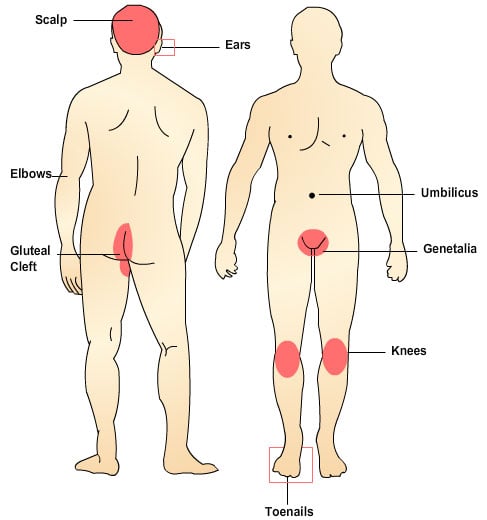
Fig: Psoriasis affected areas of the body.





